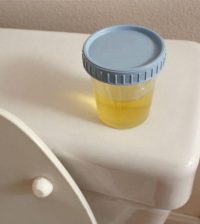- Big Health Care Disparities Persist Across the U.S., New Report Finds
- Teens Often Bullied Online About Their Weight: Study
- Work That Challenges Your Brain Helps You Stay Sharp With Age
- Urine Test Might Spot Head-and-Neck Cancers Early
- Many Seniors Are Overmedicated, But ChatGPT Might Prevent That
- Antipsychotics May Do Great Harm to People With Dementia: Report
- Two-Drug Combo Curbs Drinking for People Battling Severe Alcoholism
- Most Homeless Americans Are Battling Mental Illness
- FDA Recalls Heart Failure Devices Linked to Injuries and Deaths
- COVID Does Not Spur Asthma in Kids, Study Finds
At-Home Care of Painful Endometriosis

Patients with painful endometriosis can help reclaim their lives by managing flare-ups at home and getting medical care, a specialist in women’s health assures.
Dr. Kristin Riley, chief of minimally invasive gynecologic surgery at Penn State Health in Hershey, offered information about the condition that affects 1 in 9 women.
Endometriosis happens when tissue that normally lines the uterus (endometrium) grows outside of it instead.
The abnormal tissue can spread to the fallopian tubes, ovaries, pelvic area, bowel, bladder, rectum, appendix and diaphragm.
It can cause pain before, during or after periods, including during intercourse, and with bowel movements or urination. For some people, it is a source of chronic pelvic pain.
Having a mother, sister or daughter with endometriosis, starting your period before age 11 or after age 14, having heavy periods lasting more than one week or having monthly cycles fewer than 27 days apart are all risk factors for the condition.
A doctor can often diagnose endometriosis with an ultrasound.
“They’ll move the ultrasound around in such a way to see if organs are stuck together, which can happen with endometriosis,” Riley said in a Penn State news release. “Or when they push in certain places, is it painful to the patient? That can be helpful. And sometimes with an ultrasound, you can see a big cyst of endometriosis on an ovary — that’s called an endometrioma.”
An MRI or CT scan may also reveal endometriosis in the abdominal wall.
“That’s caused when endometrial tissue is transplanted there from a surgery, most commonly from a C-section,” Riley explained. “When we see that in patients, they’ll usually have more endometriosis in their pelvis.”
Definitive diagnosis happens with laparoscopy, a minimally invasive surgery using a long, skinny camera to look at the pelvic region. Surgeons will remove as much of the endometriosis as possible and do a biopsy.
It’s not uncommon for the endometriosis to return within a year after laparoscopic surgery, Riley added.
Other treatments include anti-inflammatory medication and hormone therapy.
Because stopping periods can decrease pain and inflammation, doctors may prescribe birth control pills, progesterone pills or progesterone intrauterine devices.
Endometriosis medications like Lupron Depot, which is injected every one to three months, or the oral medication Orilissa are options.
While many women who experience endometriosis may find relief, others may not if their pain is coming from the pelvic floor or bladder.
To manage symptoms at home, Riley and her team work with patients to create a personalized “flare care” kit, with options for the patient in case of a flare-up.
This can include anti-inflammatory over-the-counter medications such as ibuprofen (Motrin) or naproxen (Aleve); warm baths or heating pads; a battery-powered device that delivers electric impulses through electrodes on skin known as transcutaneous electrical nerve stimulation (TENS) therapy; meditation; and yoga.
More information
The U.S. Office on Women’s Health has more on endometriosis.
SOURCE: Penn State Health, news release, March 2, 2023
Source: HealthDay
Copyright © 2024 HealthDay. All rights reserved.










